How to Paint Your Room Like a Pro
Welcome back, I hope you are ready to paint with me today! Paying a professional to paint your room is a waste of money. I’m here today to show you all the tips and tricks to Paint Your Room Like a Pro! If you’re just popping in, this week is Paint Week!
If you missed any of the paint week posts, here’s the recap:
- Monday: How to Pick Your Paint Color
- Tuesday: How to Pick the Paint Sheens and Paint Types
- Wednesday: Prepping to Paint Your Room Like a Pro
- Thursday: How to Paint Your Room Like a Pro
- Friday: Top 15 Must Have Paint Tools
Painting your room like a pro isn’t difficult, it does require the right tools, patience and the willingness to paint 2-3 coats if necessary.
Materials:
- Paint tray
- Paint roller with a 1/2″ nap for smooth walls. (5/8″ nap for textured walls)
- 2.5″ angled painter’s brush
- 1″ square artists brush
- X-acto knife
- Edger
- Painter’s tape
- Damp rag
- Sanding block with 200 grit or higher sand paper
- Extension pole for paint roller
- Step stool or platform
- Moveable light or spotlight
Are you all dressed up in your Sunday best? Go ahead and get changed into your paint clothes because you want to look like the Pros (and save your clothes from being damaged.)
When I paint a room, I always paint the ceiling first, unless it REALLY doesn’t need painting. It is more efficient to paint the whole room while you have the tarps down and supplies out. Besides, you know you won’t go back and paint the ceiling another day. Am I right?
Painting Ceilings:
I’m not going to lie, painting ceilings is a pain in the neck, literally! You will definitely need an extension pole to get the ceiling painted. If you have 20 foot ceilings, you might want to go ahead and hire a pro. Otherwise, this is definitely a DIY task, so let’s get this ceiling painting party started!
I’m going to assume that you are working with a previously painted ceiling. If you have newly drywalled or scraped ceilings, you’ll need to prime first.
Begin by lightly sanding the ceiling. This should knock off any bumps and will lift any dust or dirt.
Wipe off the sanding dust with a damp rag or sponge.I found using a damp swiffer mop works great and cuts the time in half. (Of course if you have textured ceilings, you won’t be sanding or wiping with a damp rag. You can use a brush attachment and vacuum the ceiling.)
AND NOW, the moment you all have been waiting for — it’s time to crack open that can of paint!
Don’t use just any old paint for this job. First choose a flat finish, it will show less imperfections.
I prefer the Valspar Ultra White paint because it is the brightest white I’ve found. (Side note: Valspar has changed their formula to add primer to the paint. I don’t think the coverage is as good as the previous formula. But, it is still the brightest white I’ve found so I still prefer it.)
When choosing a roller use 1/2″ nap. It will hold more paint and you will be able to paint faster. To speed up the painting process even more, purchase the HomeRight EZ-Twist Paint Stick (affiliate link.) You can read my review, and see why I love the HomeRight Paint Stick. Use a fresh roller for each coat. It makes a difference to have a new roller, trust me.
Start by edging around your ceiling. Use an edge roller or a paint brush to line the perimeter of the ceiling. You can use painter’s tape if you wish, or if you have a steady hand you can skip the taping. (If you are painting your walls or crown molding, you can skip the taping as well and paint the molding after you finish with the ceiling and walls.)
Pour your paint into the paint tray and start painting in one corner. Paint in random directions. Now isn’t the time to practice perfectly straight racing stripes.
I like to paint a “W” and then roll the paint out and around. Work in four – five foot sections and always roll into the wet edge of the section you were previously painting.
Try not to stop and start, you don’t want to roll over areas of paint that have started to dry. Keep a lamp/spotlight aimed near where you are painting to highlight the edges of the wet paint. This will help you get good coverage.
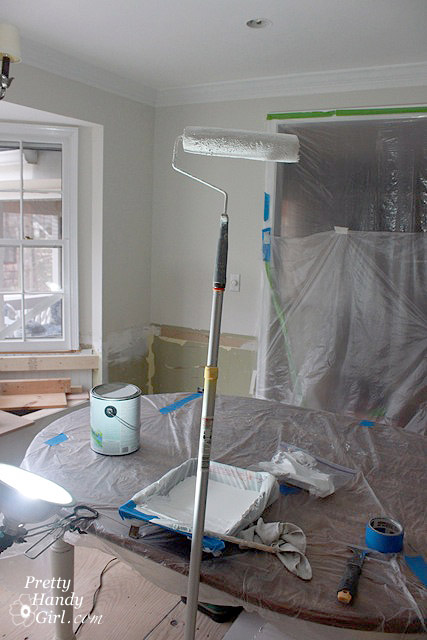
After you finish the room, take a break. Pop some Advil and wait for the ceiling to dry completely. Ready to go again? To get a professional finish, you will need two coats of paint.
Hop back up on the step stool and lightly sand the ceiling again. You need to knock down any areas that got too much paint or a piece of lint. Lightly wipe off the ceiling with a damp rag or sponge.
Repeat the edging and paint rolling process. You’re done with the ceiling. Phew.
A brief note about textured ceilings vs. smooth: Any ceiling that is textured will be darker because of the shadows created by the popcorn, or texturing. If you have a dark room and it has popcorn ceilings, consider scraping them.
And of course, I have a tutorial for scraping your own ceilings!
Painting Walls:
Painting the walls in your room is basically the same as painting your ceiling, except it is easier on your neck.
Begin by painting the border of one wall. Use either a paint brush or the edger. Be sure to brush paint into the corner, but check back for any drips.
Use your roller to roll out that “W” shape.
Roll the roller back and forth, up and down and in random directions until you have filled in a 4-5 foot square section of wall. Your paint should be spread evenly.
Next, roll the paint roller very lightly over your square to make sure the coat of paint is even and to rid the wall of any start and stop roller marks.
Start on the next section with another “W” shape and repeat until you have covered your wall in paint. Then move on to the next wall. Keep in mind that you will need at least two coats of paint. You’ll get a more durable paint job; more even coverage; and it will look professional if you use two coats of paint.
A few words of caution while painting:
- If your paint has started to dry and {gasp} you see a spot you missed or a bug in your paint, resist the urge to roll over it. Wait until it dries, then sand or paint the messed up area.
- It is best not to overload your roller with paint. Too much paint can drip and run. If that happens, use your damp rag to wipe it up immediately. And remember, you are going to use two coats, right?!
Now that you have completed the first coat (and it is dry to the touch), pull out the sanding block. Lightly sand all the walls. You are just knocking down any bumps (or bugs) and giving your paint layer a little “tooth” for the next coat to adhere to.
Then wipe down your walls with a damp sponge to remove all the sanding dust.
The sanding between coats may seem like overkill to you, but trust me, the sanding step makes a difference! And you wanted to know how to paint like a professional, didn’t you?
Now, go ahead and paint your second coat on the walls.
Done? Well, not quite. Remember you have to paint the baseboards, trim and moulding now.
At this point you have painted the ceiling and all of the walls in your room. If you are sure your walls are dry (at least 1 hour or more), then you can move on to the trim.
Painting the Trim:
Go ahead and tape off the edge of your walls where they meet the moulding. Then use the matte medium trick I showed you yesterday (or you can use a small amount of wall color) to seal the edge of the tape on the wall side.
Paint all your trim with a 2 1/2″ paint brush* dipped in a small bucket of trim paint.
*I prefer to use Purdy brushes because the bristles don’t shed and they last for years! See my post on cleaning brushes HERE to see how I protect them from wearing out.
Paint two coats of paint on the trim, this will help to keep it looking new and stand up to the “Matchbox Demolition Derby” games that ensue in your home. (What? You don’t have those games in your house? Lucky for your home.)
When the paint has dried partially (don’t wait too long), remove all the tape.
Finishing Touches:
To clean up imperfections, you can use one of two techniques (I use both):
1.Gently scrape any excess paint off with an x-acto blade.
2. Use a small square artist’s brush and paint over any seepage and get that crisp edge.
Hooray, you are done! Now you can tell your friends, “I’m sorry I can’t give you the name of my painter, because I painted the room myself!”

Pin for later!
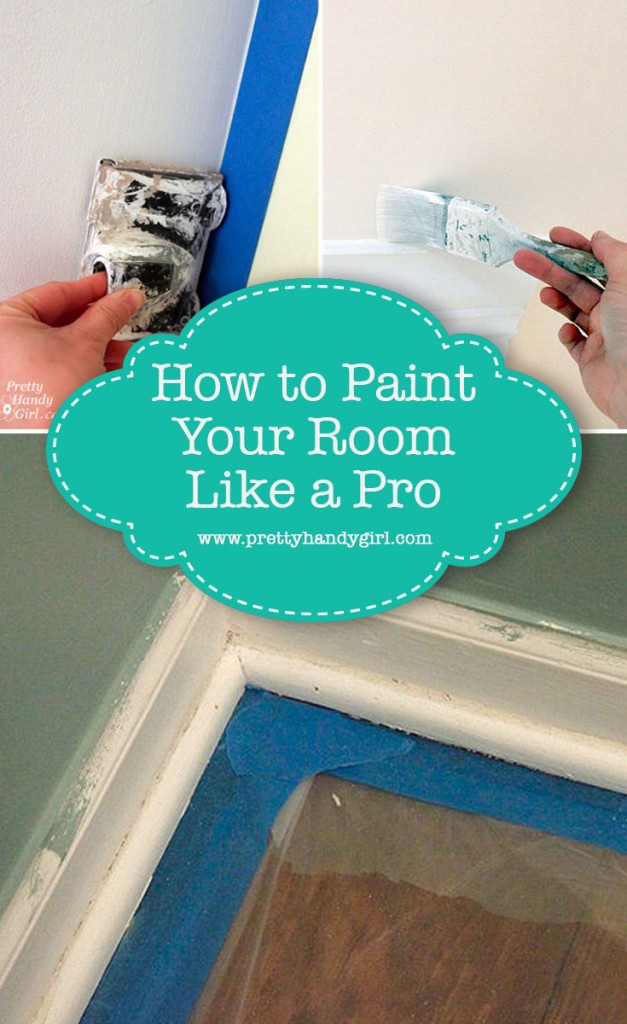

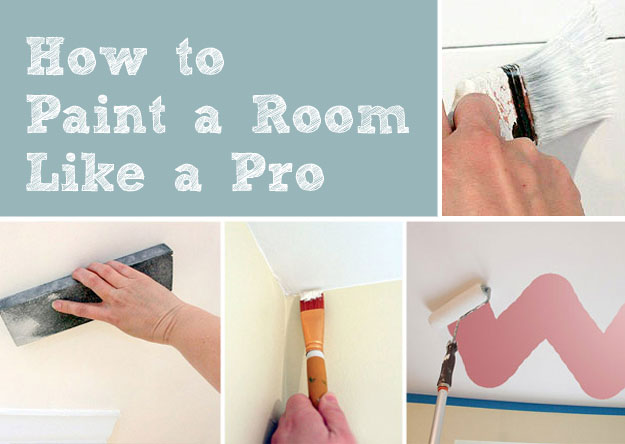

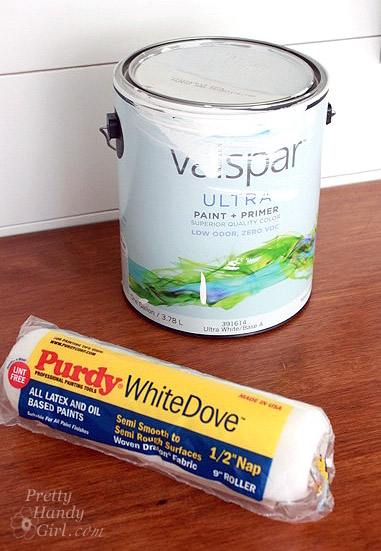
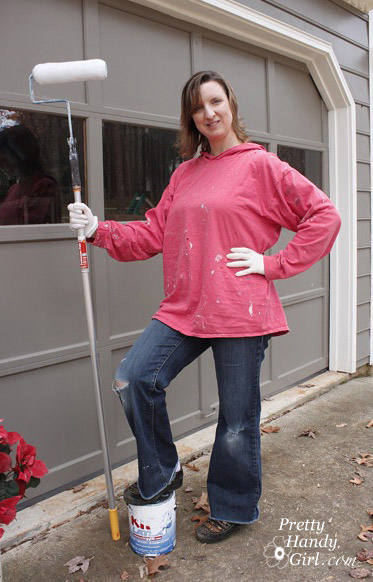
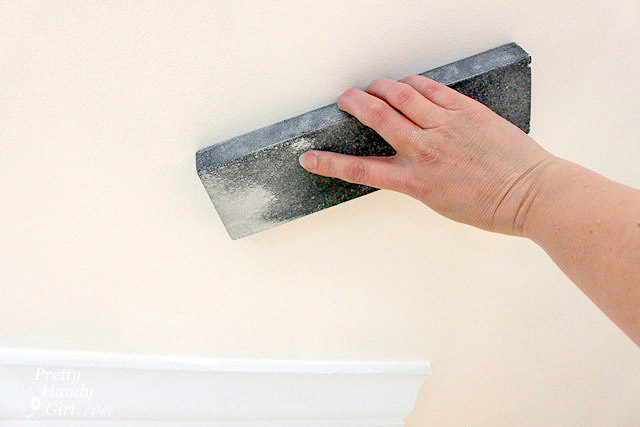
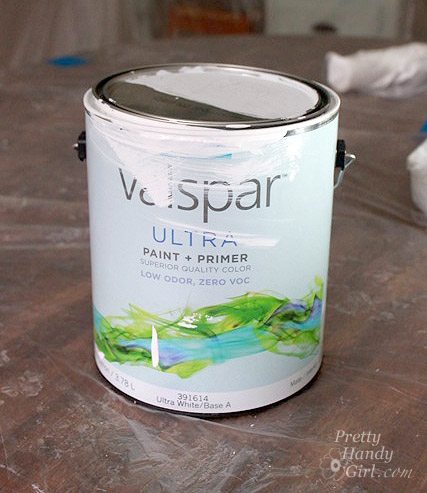
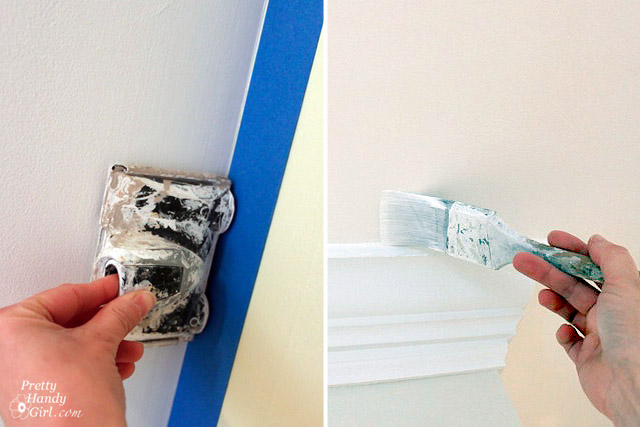
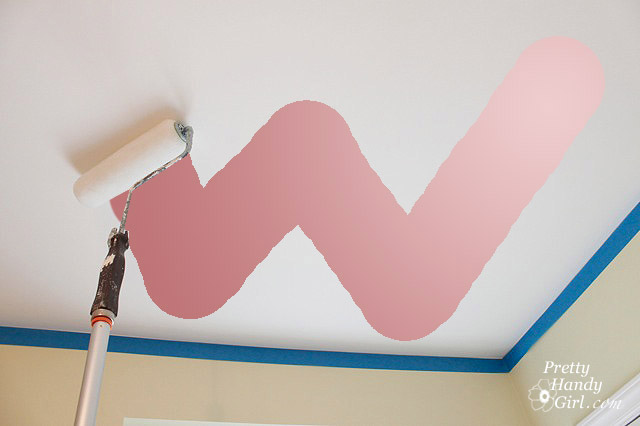
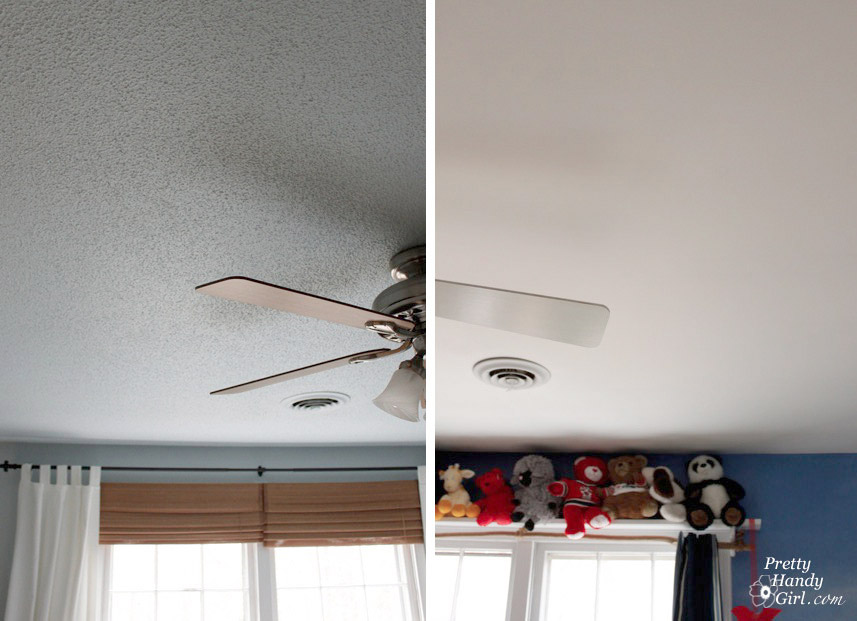

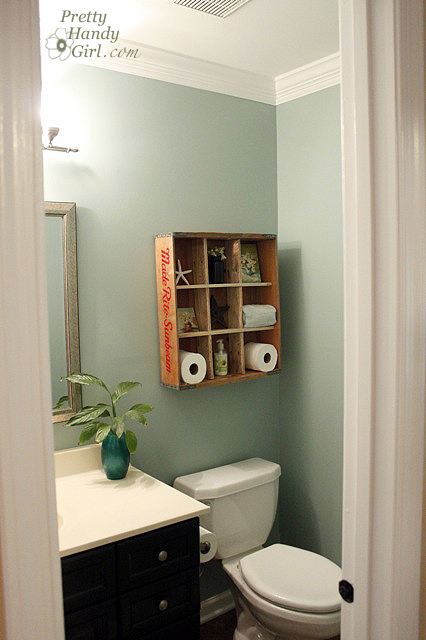
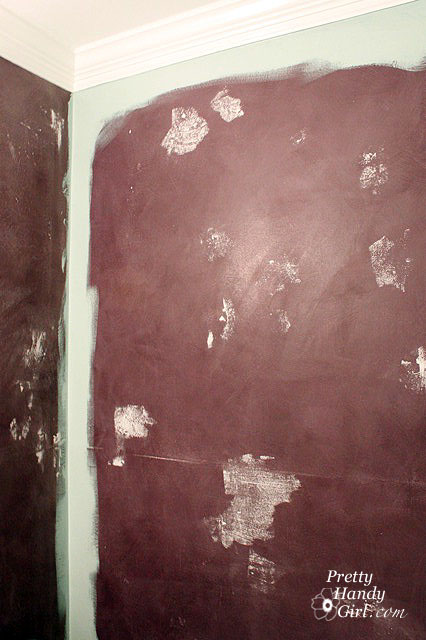
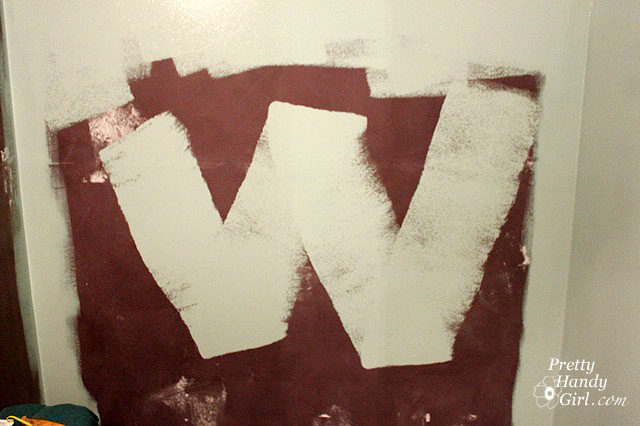

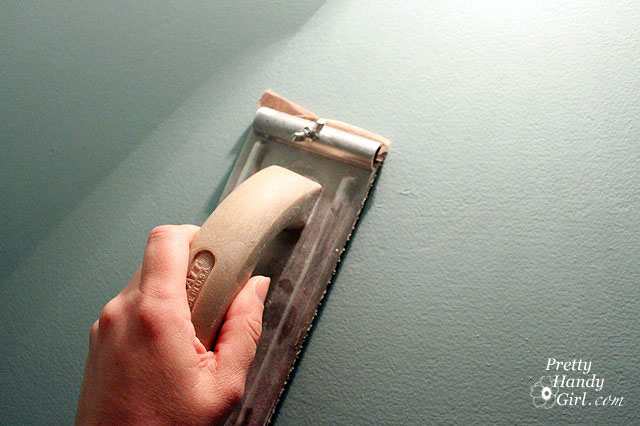

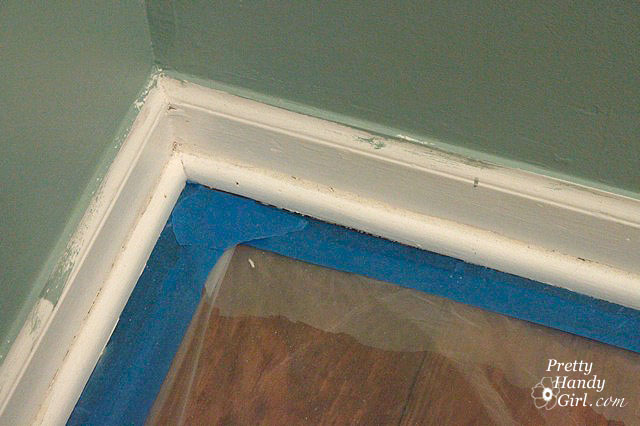
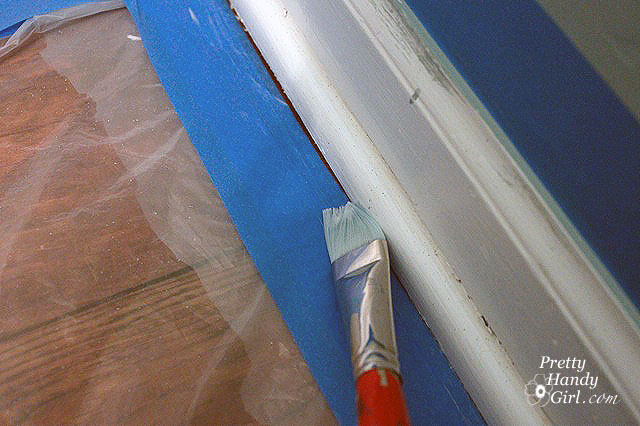
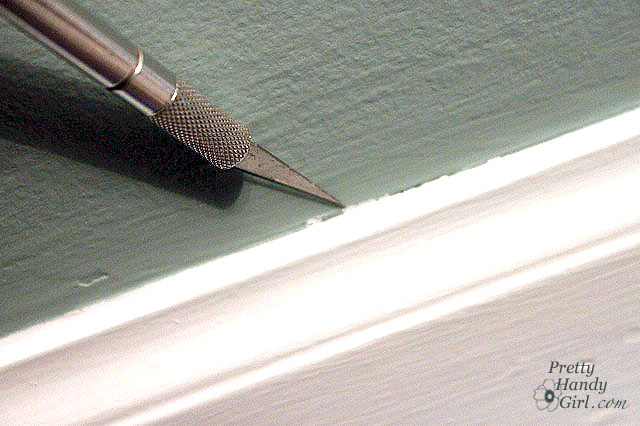

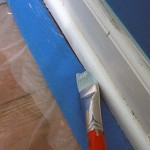
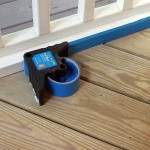
We give a “Painting Tips” class at the Home Depot Weekend Workshops all the time. My tips: Wrap the roller in blue tape and then rip it off (Ouch)…it eliminates any lint or loose fibers. Dampen your roller with water (use a spray bottle)….it helps the roller fibers absorb the paint.
Utterly brilliant post Brittany.
Do detailed and SO handy . . . I’m just about to paint my freshly plastered (by me) kitchen walls.
You rock!
<3
Pia